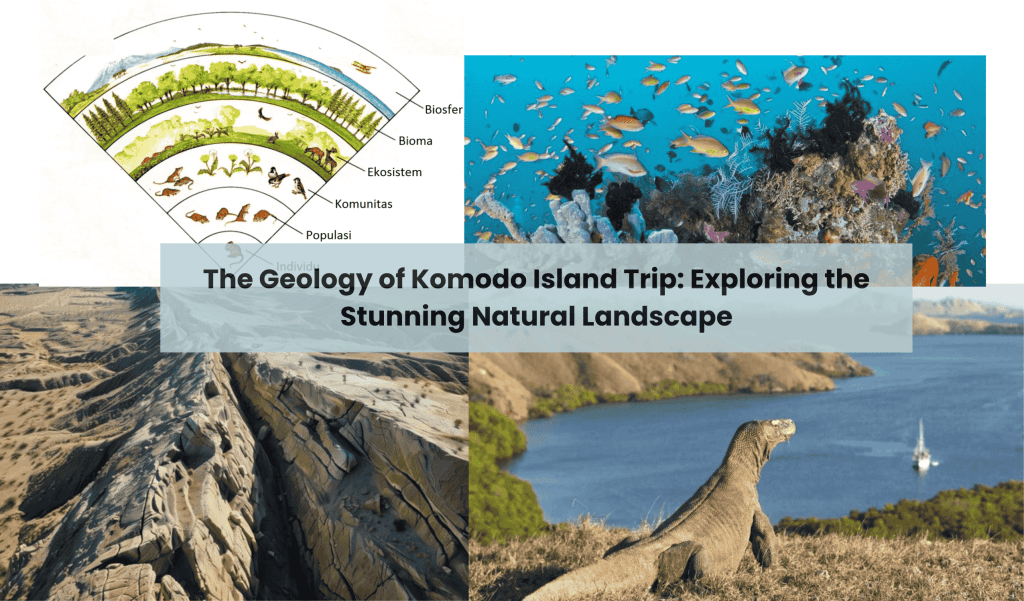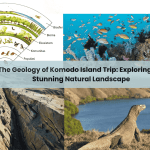The Geology of Komodo : Understanding the Landscape
When most travelers think of Komodo, images of the legendary Komodo dragon and turquoise seas come to mind. However, beneath this awe-inspiring beauty lies a geological story that has shaped the rugged charm of Komodo National Park. From volcanic origins to shifting tectonic plates, the geology of Komodo offers fascinating insights into how this Indonesian paradise came to be. Understanding the island’s formation not only enhances your appreciation during a Komodo island trip, but also reveals the ancient forces that created one of the most spectacular landscapes on Earth.
A. Volcanic Birth: The Making of Komodo island trip
Millions of years ago, the islands that now make up Komodo National Park — including Komodo, Rinca, Padar, and dozens of smaller islets — were born from intense volcanic activity. This region lies within the Pacific Ring of Fire, an area renowned for its seismic and volcanic activity. As the Indo-Australian and Eurasian tectonic plates collided, magma pushed upward, giving birth to chains of volcanic islands that would later form Indonesia’s Lesser Sunda Islands.
Komodo Island, in particular, is the result of these ancient eruptions and geological shifts. The rugged hills, sharp ridges, and deep valleys visible today are remnants of solidified lava and ash deposits. When you embark on a Komodo tour, you’re not just witnessing nature’s beauty—you’re literally walking on layers of Earth’s fiery past.
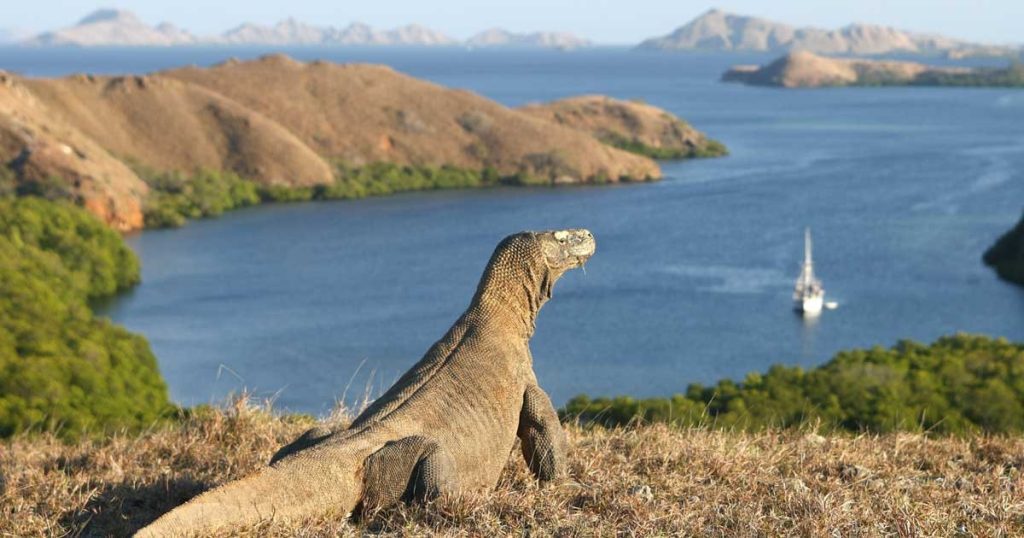
1. The Dramatic Terrain: Hills, Valleys, and Coral Coastlines
One of the most striking features of Komodo’s geology is its diverse terrain. From arid savannahs to lush green hills, the island’s topography tells a story of contrasts. The volcanic soil, though rocky and dry, supports a surprising range of vegetation, from palm trees to hardy grasses that thrive in the island’s semi-arid climate.
As you sail through the park on a Komodo boat trip, you’ll notice the island’s steep hillsides that seem to plunge directly into the sea. These dramatic cliffs and coastlines are sculpted by erosion and tectonic uplift, continually reshaping Komodo’s geography. The white and pink sand beaches, for instance, are formed from crushed coral and volcanic minerals — a reminder of how land and sea coexist in this dynamic environment.
The Pink Beach of Komodo is a perfect example. Its rosy hue comes from microscopic red organisms called Foraminifera that live in coral reefs. When these corals break down, they mix with white sand, creating a natural wonder that is both geological and biological in origin.
2. Underwater Wonders: The Submarine Landscape
While the land above water tells one story, the seascape beneath the surface reveals another layer of geological magic. The waters surrounding Komodo National Park are home to deep channels, coral walls, and seamounts formed by shifting tectonic plates and ancient volcanic activity.
During a Komodo boat trip, divers and snorkelers are treated to breathtaking underwater topography — from sloping reefs to dramatic drop-offs that plunge hundreds of meters deep. The park sits at the confluence of the Indian and Pacific Oceans, creating strong currents that bring nutrient-rich waters, sustaining one of the most biodiverse marine ecosystems in the world.
The underwater ridges and valleys mirror the rugged terrain of the islands, showing how the same geological forces that shaped the land continue to influence life beneath the waves. For geology and nature lovers alike, this connection between land and sea is one of the many reasons why a Komodo island trip is a once-in-a-lifetime experience.

3. Tectonic Forces at Work: A Living Landscape
Komodo is not a static island—it’s a living, shifting landscape. The ongoing movement of tectonic plates means that the region still experiences occasional tremors and subtle geological changes. This activity contributes to the island’s jagged ridges, hot springs, and even the formation of new landforms over time.
Scientists studying Komodo’s geology note that its landscape offers a unique window into plate tectonics in action. As part of the Lesser Sunda Arc, Komodo’s foundation continues to rise and fall with the forces beneath it. The result is a terrain that’s constantly evolving — one that challenges and fascinates geologists and adventurers alike.
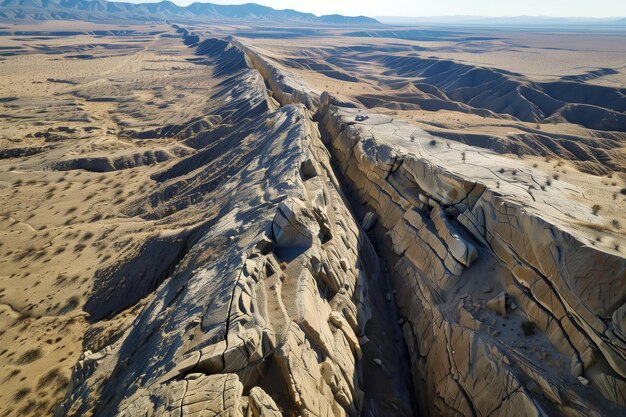
4. From Rock to Ecosystem: How Geology Shapes Life
The geology of Komodo doesn’t just define its appearance—it also determines how life thrives here. The island’s dry climate and rocky soil have given rise to savanna-like ecosystems, home to species that have adapted to limited water and extreme heat.
This is also what makes Komodo the perfect habitat for its most famous resident: the Komodo dragon. These prehistoric reptiles evolved to survive in the island’s harsh environment, feeding on deer, buffalo, and smaller animals that inhabit the savannah and valleys. When you take a Komodo dragon tour, you’re witnessing the direct link between geology and biology — how the land itself has influenced evolution.
The coral reefs surrounding Komodo, meanwhile, owe their existence to the underwater geology. Volcanic rock provides a stable foundation for coral growth, and the nutrient flows from the region’s deep-water currents create ideal conditions for reef formation. This interconnectedness between land and sea is what makes Komodo National Park a UNESCO World Heritage Site and one of the most geologically and biologically rich places on Earth.
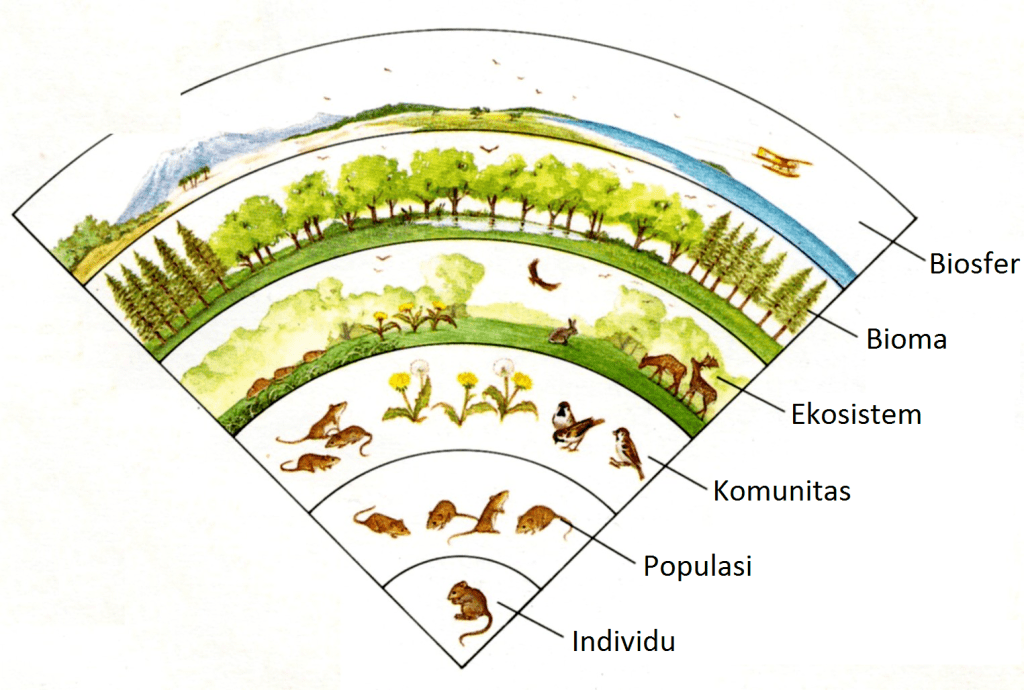
5. Exploring Komodo’s Geology: A Traveler’s Guide
For those interested in delving deeper into Komodo’s geological wonders, there are several ways to explore:
- Hiking Adventures: Trekking up Komodo’s hills offers panoramic views of the park’s volcanic landscape. From the top of Padar Island, you can see how the rugged terrain stretches across the horizon — a breathtaking view shaped by millions of years of geological activity.
- Diving and Snorkeling: The underwater geology is just as captivating. Sites like Batu Bolong and Manta Point showcase coral-covered slopes, underwater pinnacles, and unique rock formations.
- Educational Komodo Tours: Some Komodo tours now include eco-education programs that explain the island’s geology and ecology. These experiences allow travelers to appreciate the scientific and environmental importance of the area.
Whether you’re exploring on foot or by sea, understanding Komodo’s geological foundation adds a deeper dimension to your journey.
6. Why Geology Matters in Conservation
The geological stability of Komodo National Park is closely tied to its conservation. By studying how the landscape changes over time, scientists can better understand erosion, coral health, and habitat sustainability. Protecting Komodo’s geology ensures that its natural ecosystems — both land and sea — continue to thrive.
Responsible tourism also plays a part. Choosing eco-friendly Komodo boat trips and guided Komodo tours helps preserve the fragile balance between nature and human activity. When travelers learn about the island’s geology, they gain respect for its ancient origins and the need to protect it for generations to come.
Conclusion: The Story Beneath the Surface
The breathtaking scenery of Komodo National Park is more than just a feast for the eyes — it’s a living record of Earth’s geological history. From volcanic eruptions and tectonic collisions to coral formation and erosion, every rock and ridge tells a story millions of years in the making.
When you embark on a Komodo island trip or a Komodo dragon tour, remember that you’re exploring more than just an island — you’re stepping into a dynamic landscape shaped by the planet’s most powerful forces. Understanding Komodo’s geology deepens your connection to this magnificent destination and transforms your journey into a true exploration of Earth’s past and present.


